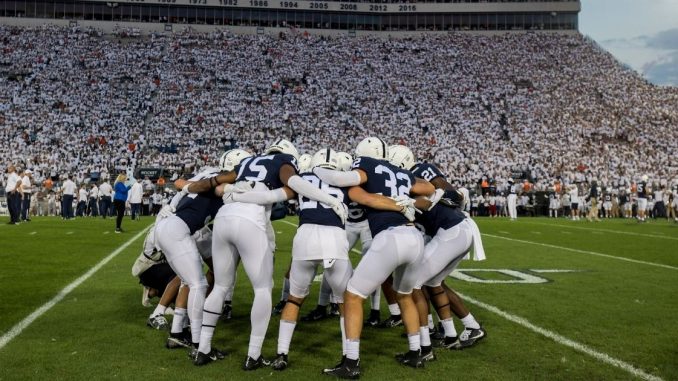
Two and a half weeks ago, fans across the country flooded college football stadiums for the first time in almost two years. In many ways, it felt like America was returning to normal again.
The trend continued this week as college football teams completed their third week of the season. One of the biggest games this past weekend pitted Florida against top-ranked Alabama, and 90,000 fans gathered to witness what turned out to be a nail-biting win for the Crimson Tide.
College football is cool. pic.twitter.com/m6EEHQHryS
— Ross Dellenger (@RossDellenger) September 18, 2021
Scenes like that one give any college football fan like myself goosebumps. But for some COVID-obsessed health professionals, they invoke unnecessary fear.
Take, for example, newfound celebrity Dr. Anthony Fauci. When he was asked about college football fans finally going back to normal, he discouraged it.
“I don’t think it’s smart,” Fauci said on Sept. 7, according to Mediaite. “Outdoors is always better than indoors, but even when you have such a congregate setting of people close together – you should be vaccinated.”
This is exactly what I'm talking about. This is terrifying.. https://t.co/djtnbNG6J0
— Julie DiCaro wrote a book (@JulieDiCaro) September 7, 2021
According to a new study by the Daily Caller, the fearmongering from Fauci and the left has once again proven to be unnecessary.
The Caller reported that in the first full weekend of college football (Sept. 3-5), the biggest crowd gathered in Ann Arbor, Michigan. Over 109,000 fans turned out to watch the Wolverines’ season-opening victory over the Western Michigan Broncos.
The game was played on Sept. 4, at which time the seven-day average for new COVID 19 cases in Washtenaw County, which includes Ann Arbor, was 81. On Sept. 20, the seven-day average was 80 cases.
Since most people who contract COVID-19 test positive within two weeks of being exposed, the numbers would likely have shown a spike if the Michigan game was some sort of superspreader event. Instead, the seven-day average stayed almost exactly the same.
In addition, Washtenaw County Health Department public information officer Susan Ringler-Cerniglia told the Caller the department received just one report of a non-student testing positive for the virus in connection to the game.
While it’s not clear how many students were at the game, it’s fair to assume the majority of attendees were not current Michigan students. Out of tens of thousands of fans, one reported case is a pretty small percentage.
Lest you believe this is just a one-off, the Caller examined multiple other locations where big crowds gathered for college football games during week one.
In Blacksburg, Virginia, over 65,000 fans witnessed the Virginia Tech Hokies’ upset win over the North Carolina Tar Heels on Sept. 3. Growth rate of cases in Montgomery Country, Virginia, has slowed since then, the Caller reported.
“New River Health District Epidemiologist Jason Deese indicated there was no significant change in cases in the area related to attending football games,” Virginia Department of Health public information officer Robert Parker said.
It doesn’t stop there, either. Cities across the country including Knoxville, Tennessee; Tallahassee, Florida; and Austin, Texas, all saw case numbers drop or remain the same despite each hosting crowds of 68,000 or more.
The study confirms what most people watching the science already knew: Outdoor transmission of COVID-19 is extremely rare. Fans are back in a big way across American sports, and Fauci can hardly stand to see his grip on the country slowly slide away.
